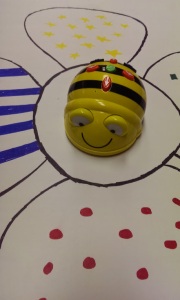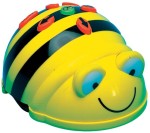 I believe the easiest approach when it comes to using new technology is to incorporate it into a program you are already doing. Sometimes it feels too daunting to design an entire new program around some fancy new thing. Sometimes you don’t have room on the schedule to add that new fancy program. Other times you don’t have the physical room needed to add that new fancy thing. A simple solution is to find approachable technology that adds-on and/or supplements what you already do. For me that regular program to try things in is storytime.
I believe the easiest approach when it comes to using new technology is to incorporate it into a program you are already doing. Sometimes it feels too daunting to design an entire new program around some fancy new thing. Sometimes you don’t have room on the schedule to add that new fancy program. Other times you don’t have the physical room needed to add that new fancy thing. A simple solution is to find approachable technology that adds-on and/or supplements what you already do. For me that regular program to try things in is storytime.
Robots was our theme for my library’s storytime sessions this week. I thought, it would be fun to let kids play with a real robot – so I pulled out the Bee-Bots. See reviews for the Bee-Bot, here and here. I love them because they are an approachable hands on technology for any age. (And they are also adorable.)
Why does this work in storytime?
- I am a proponent of hands on activities during storytimes. They help develop motor skill and control at a lot of ages.
- The Bee-Bot is very good at teaching sequencing and if/then relationships – which we teach with stories, flannels and rhymes – why not try a hands on way too?
- I like giving little ones autonomy. Letting kid’s pick what buttons they want to press helps them begin to explore.
This is the hard part. The idea of doing something nontraditional in storytime can be scary or some might even look down on it. But my view is there are always unknowns with small children, so why is this any different? Why not explore sequencing by using the Bee-Bot instead of a flannel?
The storytimes we used Bee-Bots with were our 1,2,3 Storytimes which have kids ages 1-3 with their caregivers, and our Together Time which is kids ages 3-5 with caregivers. (Yes you can do this with Toddlers.)
I drew a flower on a poster board. The middle of the flower was a circle just enough to fit Bee-Bot – that was his starting point for the activity. Each petal had a different color and pattern, so we could also work on colors and patterns while we did Bee-Bot.
We started the Bee-Bot activity towards the end of each storytime. Since we have two Bee-Bots and two librarians for most of our storytimes, we were able to split into two smaller groups. Each parent and child have a turn to interact with Bee-Bot. It is actually a very good circle activity and the kids worked on patience and turn taking – which is another developing skill for this age range. We explored with Bee-Bot for about ten minutes, then came back together as one group and did our ending song.
This went really well and the parents really enjoyed seeing their kids interact. Bee-Bot is such a great tool for younger kids, so why not try it in a storytime?


